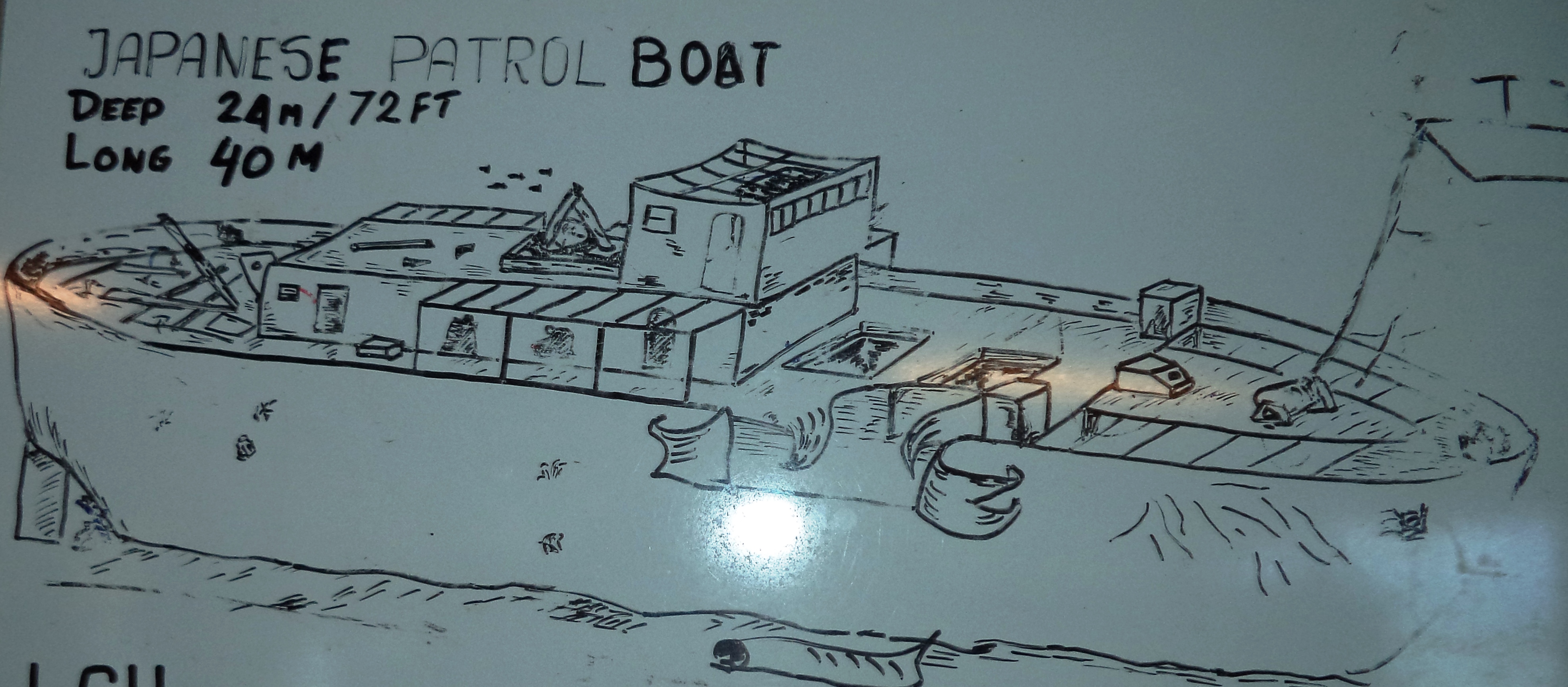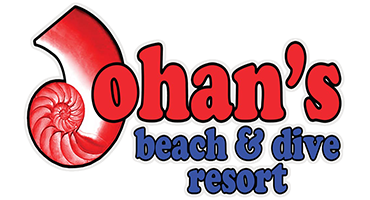Japanese Patrol Boat
Japanese Patrol Boat
Was she sunk by Captain Dyees?
Type of site: Wreck
Depth range 18 to 25 meters
Specialties: AOW Wreck
Current Generally calm

While a small wreck, this is a favorite dive spot for many divers. Generally called the Japanese patrol boat this ship has not been fully identified as to name or even type. About 105 feet long and 18 feet wide, a trawler style vessel, possibly a 150-ton tugboat or a Submarine chaser.
She sits in 25 meters of water towards the back portion of Triboa Bay. The location means zero current with just a mild one at tide changes. It also means that silted conditions takes time to clear. The wreck is in very good shape, however, a earthquake in Jan 2015, caused the collapse of the bridge. Alo the hull has a bigger split now. The 5.2 scale earthquake’s surface epicenter was only 400 meters from the wreck.
The marine life around the ship is plentiful, and the interior is a nursery for different species. At times, Yellow snappers will dominate the interior and not move away if you enter. Wreck divers will find that penetration is limited, however, it is easy access. A great wreck for training, as it easy to penetrate, easy to map and easy to measure.
A mooring line is attached near the bow of the ship on the starboard side. Most divers will complete a “lap” of the ship and then go back to the items they find most interesting.
Except for having a companionway and a slightly longer superstructure, the patrol boat is very similar to the Japanese Special Duty Subchaser Class 1 designated as SCS-1. Those vessels, however, are wooden and ours is steel. In the mid 1930s, the Japanese government standardized the design of smaller fishing vessels. Many of the designs had mounting brackets with no appeared use. During the mobilization of the fishing fleets, it was revealed that these bracket were to support military equipment such as guns or depth charge emplacements. Many of the trawlers kept their forward nets. While not actively searching, these subchasers would use their nets and forward holds to catch fish. Locally caught fish helped the supply lines as it reduced the amount of food needed to be shipped for the troops.
How this ship came to be sunk in Triboa Bay is not known. There is a possibility that she was one of the victims of the attack by Captain (Later Lt. Col ) William Edwin (Ed) Dyees on Grande island March 3, 1942.

When Colonel Dyess landed on that night of March 3, 1942, his score for the day was one 12,ooo-ton transport blown up and sunk, one 5,000- or 6,ooo-ton vessel burned, two 1oo-ton motor vessels sunk, a number of barges and lighters destroyed, a vast amount of supplies and material blown up and burned, plus a large but undetermined number of Japanese killed in the sinkings and repeated strafings of Grand island and its docks. The Tokio radio announced the next day that Subic bay had been raided by three flights of four engined bombers, escorted by fighter planes
Captain Dyees was one of those captured at the fall of Bataan and forced into the death march to Tarlac. He was later transferred to a POW camp in Davao where he escaped. His debriefing was the first information that US intelligence had about the existence of the death march and the POW camps as well as the brutal treatment that POWs received. The government at first encouraged the release of his story, but, then changed its mind. It was later released serialized to newspapers than as a book “The Dyees Story”. Here is what the public saw in the newspapers of the time. Anyone who is interested in WWII and not read the book needs to “The Dyees Story”



